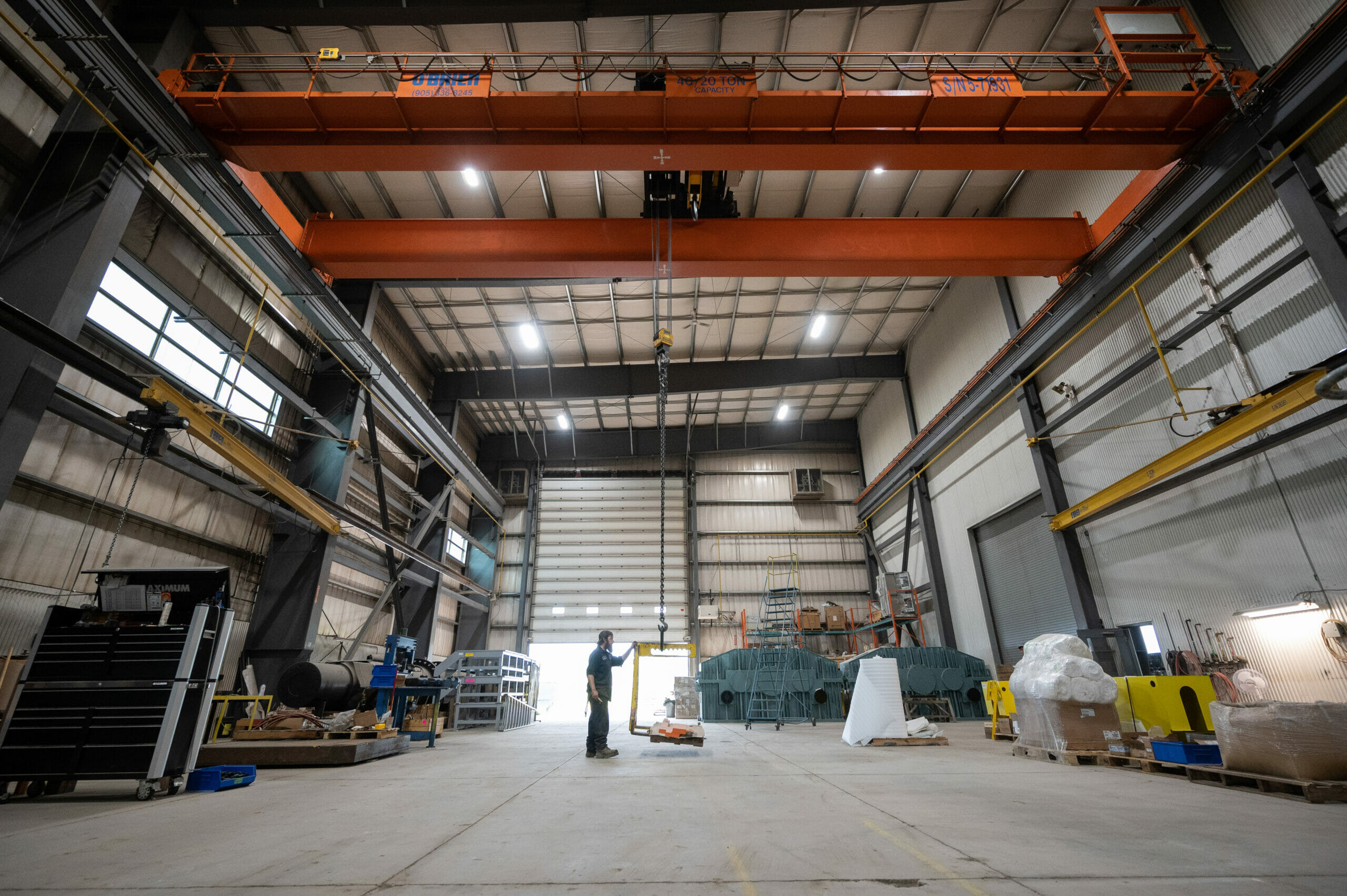
 We’ve talked about a bridge crane (also called overhead bridge cranes or overhead cranes ) and gantry cranes in previous blogs. The two types of cranes have a few things in common. Both feature a crossbeam or “bridge” – a solid beam that supports the lifting mechanism. Both offer a wide range of motion. They can be designed with the ability to move a load side to side, forward and backward, and up and down.
We’ve talked about a bridge crane (also called overhead bridge cranes or overhead cranes ) and gantry cranes in previous blogs. The two types of cranes have a few things in common. Both feature a crossbeam or “bridge” – a solid beam that supports the lifting mechanism. Both offer a wide range of motion. They can be designed with the ability to move a load side to side, forward and backward, and up and down.
These key similarities for moving a load mean that there is a possibility either type of crane might work in your environment. So how do you decide which is right for you – a bridge crane or a gantry crane?
Bridge Crane vs. Gantry Crane
To answer that, it’s also important to understand the differences between a bridge crane and a gantry crane. The key difference is how the crossbeam or bridge is mounted.
Bridge Crane
With a bridge crane, the entire crane system is mounted on the building structure. An “end truck” on each end of the bridge has wheels that allow the bridge beam to move forwards and backward along fixed runway rails.
A trolley enables the load to move side to side along the bridge.
Bridge cranes are typically larger, and due to being fixed to the building structure, they can be designed to carry heavier loads in smaller spaces.
Gantry Crane
On a gantry crane, the bridge is supported by a set of legs or a single leg. Loads are moved “forwards and backwards” via wheels or a track at the bottom of the leg(s).
Gantry cranes can carry some of the heaviest loads. If you’ve ever passed a shipyard, you’ve probably seen gantry cranes unloading cargo containers. But smaller gantry cranes that run on wheels are used to move loads in indoor industrial and warehouse environments.
Choosing Between a Bridge Crane and Gantry Crane
In the end, your choice comes down to:Lifting weight – generally you’ll want an overhead bridge crane for the heaviest loads.
- Space – your workspace layout could have a big impact on your crane choice. If you’re tight on floorspace, an overhead crane mounted above your floor might be the right choice.
- Portability – if you need to move loads indoors and out, a gantry crane mounted on wheels gives you the option to move your load anywhere you need it.
- Budget – both gantry cranes and bridge cranes come with affordable options, so you may want to examine both for your application. For the same lifting capacity, a light bridge crane may cost less than a heavy-duty gantry crane.
Be Confident in your Crane Selection with O’Brien
If you’re not sure which type of crane is right for you, call the experts at O’Brien Lifting Solutions. Our crane design and engineering team understands processes and knows our products inside and out.
Depending on the project, our engineers can visit your site to inspect the site and provide you with an analysis of the type of system that will work best in your environment. From design to installation to maintenance and repairs, O’Brien provides a complete solution to get you up and running FAST and keep your crane systems running smoothly.
All our cranes meet or exceed CMAA (Crane Manufacturers Association of America) specifications.
Bridge Cranes, Gantry Cranes, Jib Cranes, Workstation Cranes, and More – Count on O’Brien
At O’Brien Lifting Solutions, we know that selecting the right system for your production needs can be complex. There are so many decisions, and so many moving parts. We are committed to helping our clients end to end to make sure your equipment, people, and processes work together seamlessly. We stay on top of the latest advance in product design and innovations to be able to provide the best product and system solutions. We approach every project with the integrity and passion that you can only find in a family-founded business. Whether you’re looking for product advice, installation, upgrades, or service, count on O’Brien to respond with a solution. Contact us today.
